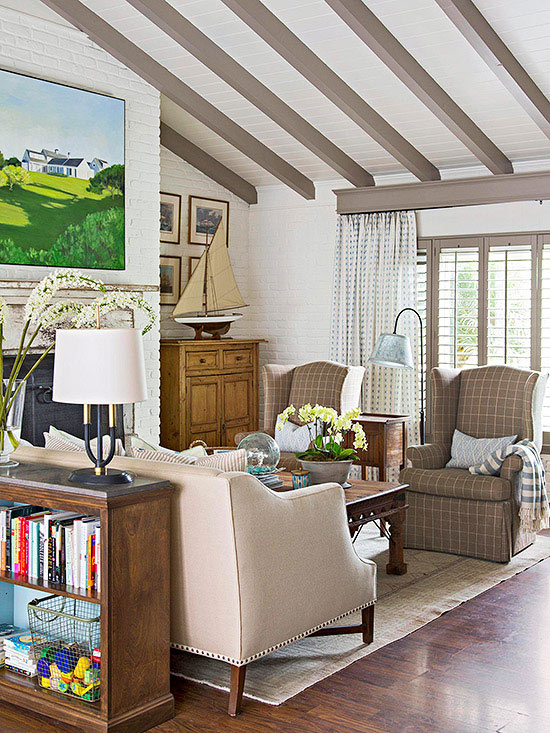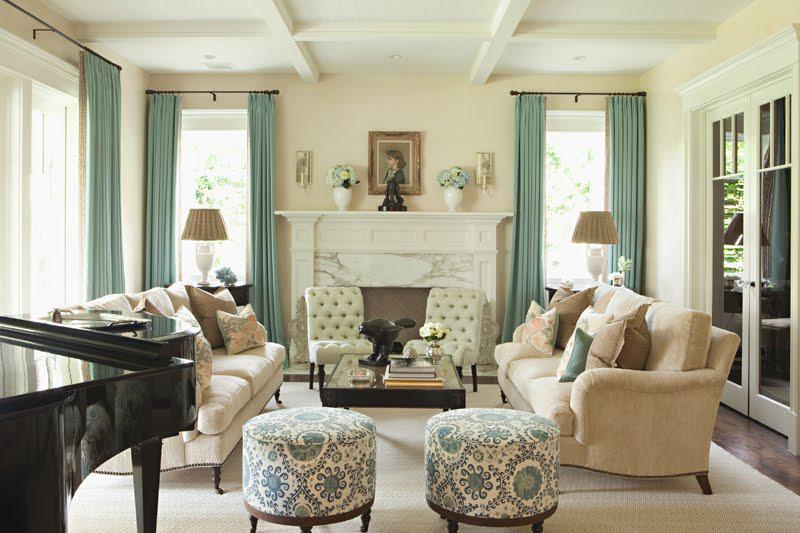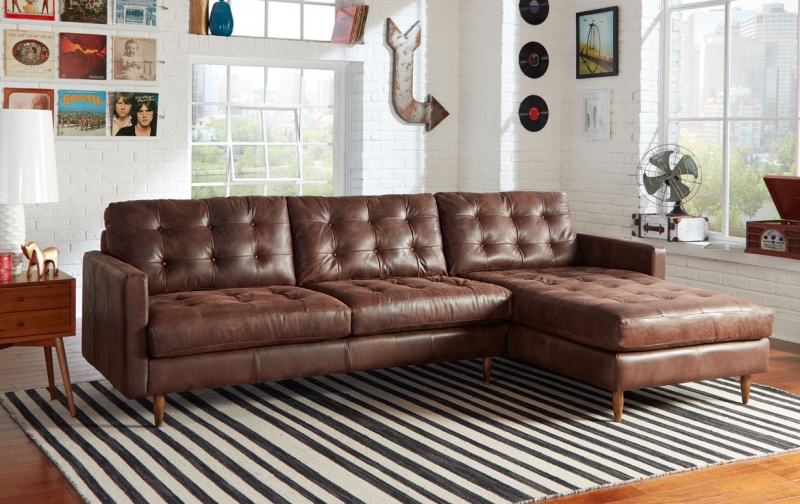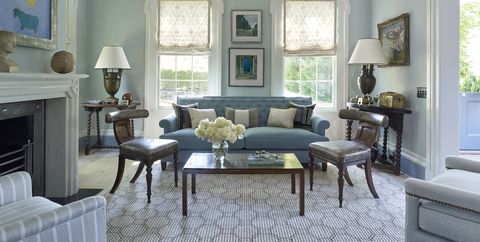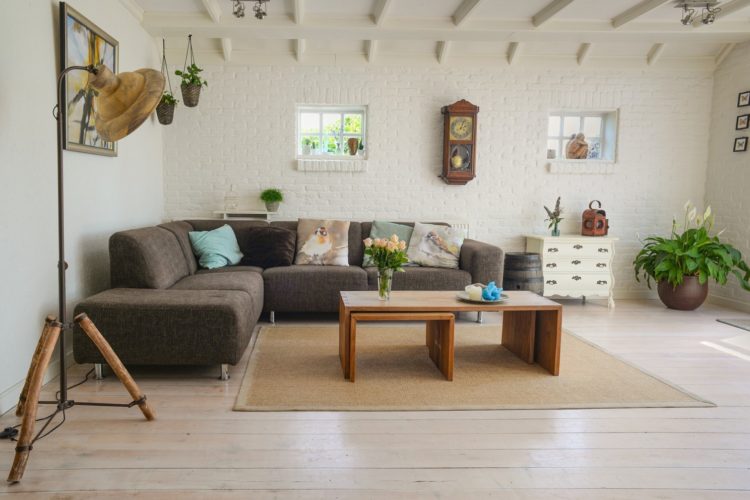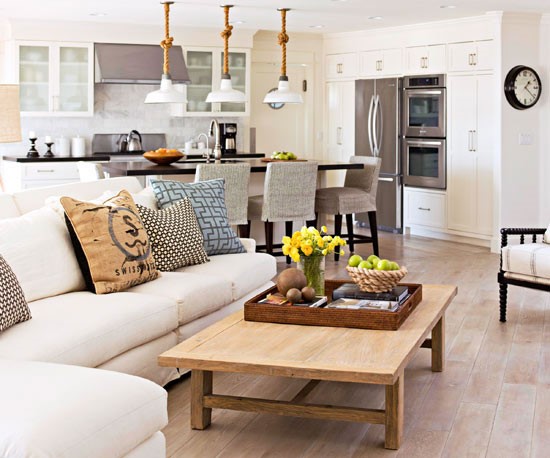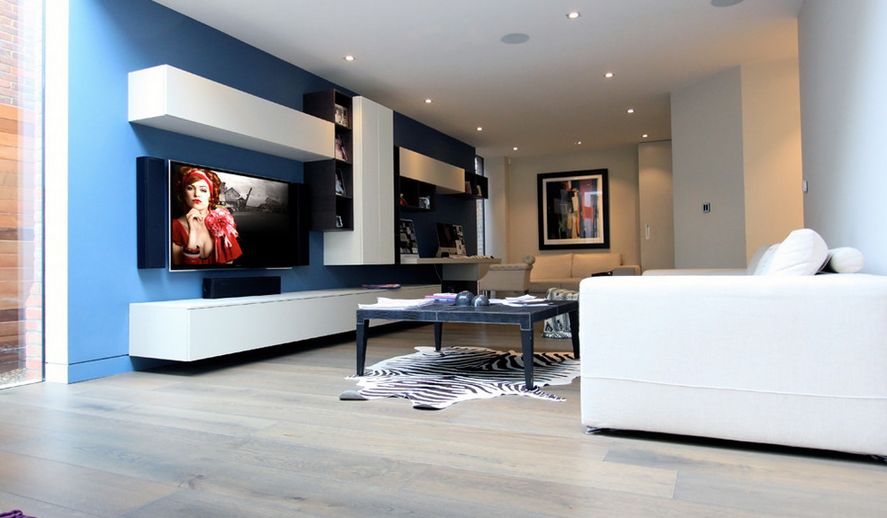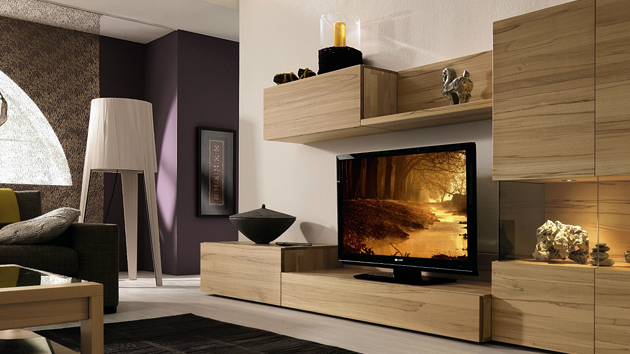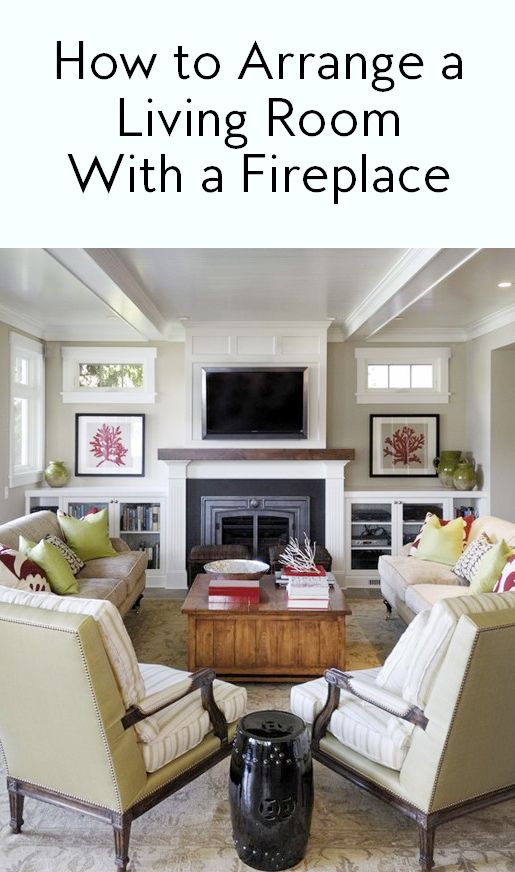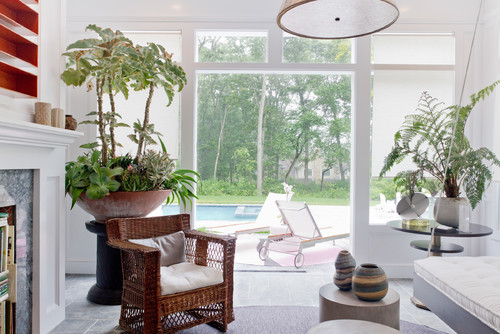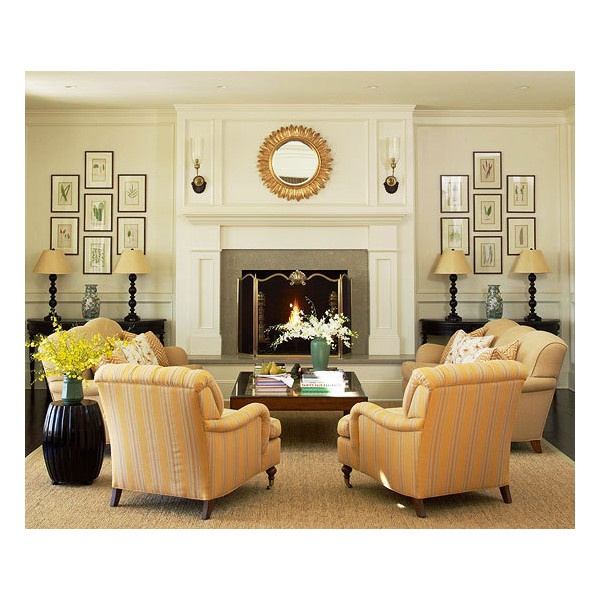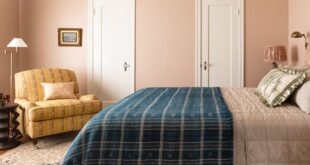Living room is the center of every home. Not only are they the best site for social activities, but they also make it easier for your family to spend quality time together. If your space feels cluttered or in disarray, you can always arrange it if you want. There are many ways to arrange your living room to make them more comfortable and inviting. In fact, turning a cramped room into a household island is easier than you think.
If you need to make changes, think about your budget and immediate needs first. Although you may want a new section for the holiday season, it may make sense to arrange your current chairs and pull them together with a cheap table or rug. Before you buy, visit consignment shops and discount stores – and pay attention to furniture sales in your area. Explore the following strategies to determine if there are any items you may need to add, subtract, or change. After receiving each tip, the area will be more pleasant and useful for you and your guests.
{1} Measure furniture before you buy

How to measure up for new furniture via Pasue at
Understand how big your space is before you buy a large item, eg. a sectional sofa. Many homeowners pick up a beautiful new piece, only to realize that it does not fit in their living room or does not leave room for other furniture. First, measure length and width of the place you plan to place your armoire or sofa. Then download the specifications for the new item online or in the furniture store. Compare the two sets of numbers to determine if there is plenty of wiring space. If not, you may need to consider a different style or design to arrange your living room.
{2} Consider household traffic flow
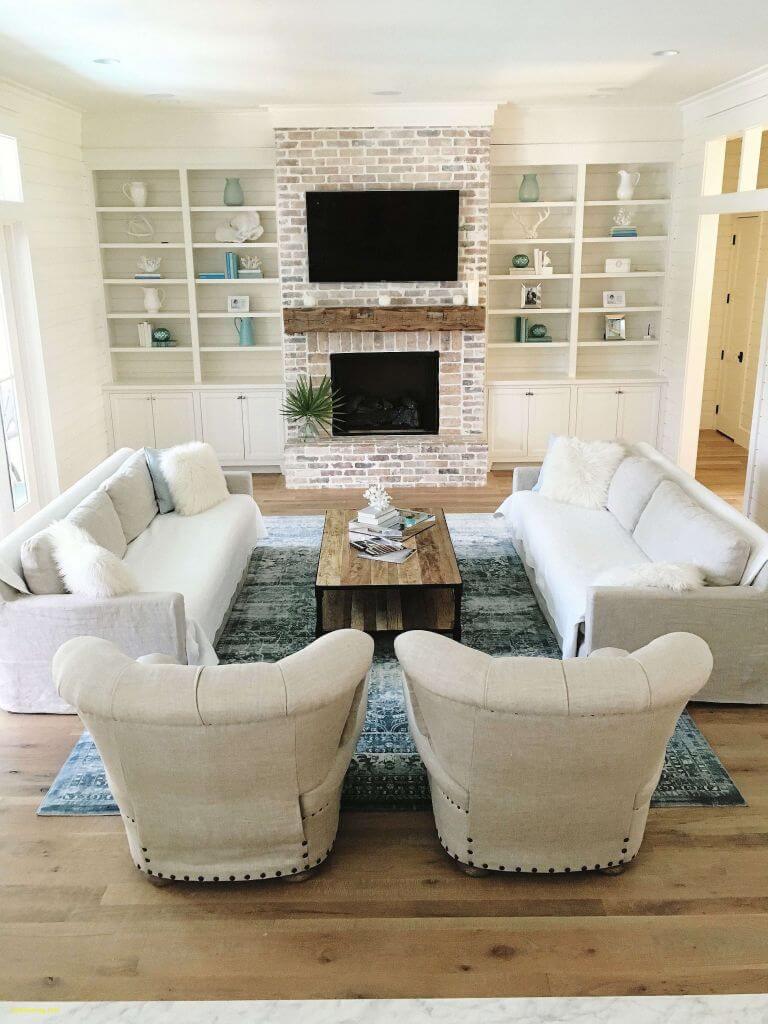
Large objects or furniture in several parts are an obstacle to the natural flow of traffic. Leave enough space between coffee tables, chairs and desks so that your family and guests can easily travel from one door to another. If you notice people stumbling or twisting their bodies to get around furniture, it's time to redo your installation. It may be good to move your pieces back against the wall. You may also consider adjusting vertically or horizontally.
{3} Create inviting social areas
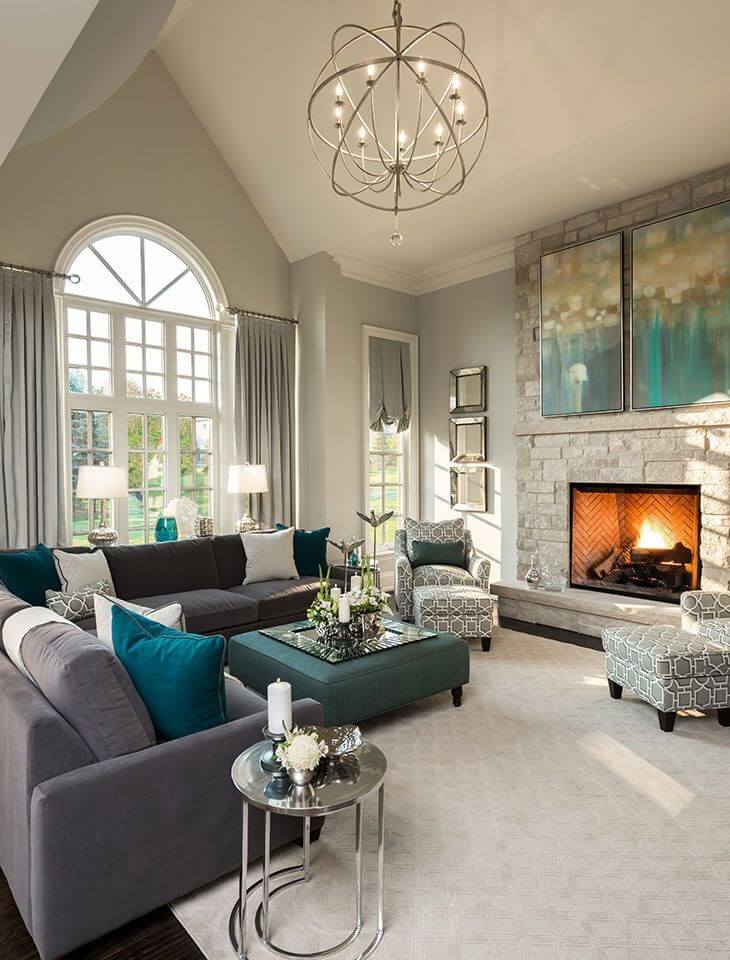
Every living room is a social space. Therefore, your guests should be able to gather without having to turn their bodies or shout at each other. If you have a large room, you can design comfortable seating that facilitates a simple conversation. Pair a sofa or set of chairs with a coffee table or a pair of end tables. Smaller quarters benefit from a central point that unites the most essential furniture. To create more intimacy, place couches and recliners opposite each other. Place larger tables between the furniture or arrange smaller ones besides seating. This allows visitors to put down their drinks or bags without having to put them on the floor.
{4} Incorporate natural lighting
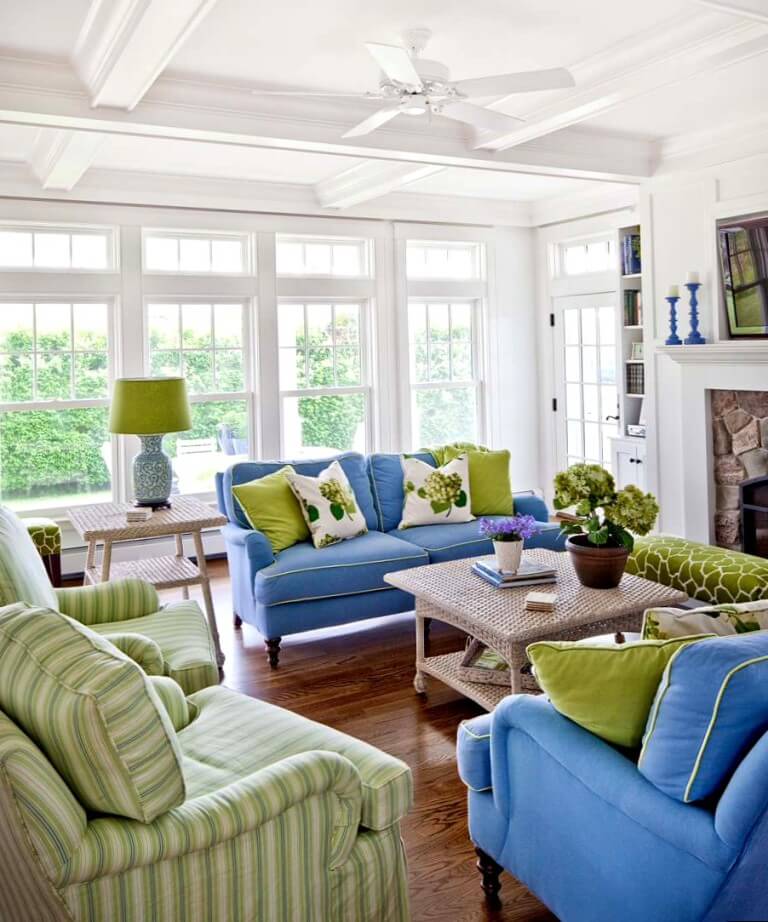
Cottage on the beach of Bowley Builders
Natural lighting from your windows improves the ambiance of the room and makes it easier to enjoy entertainment and conversation. Get the most out of the sunlight by arranging your living room furniture around your openings. Install blinds or shades to prevent the sun from bleaching the sofa and chair fabric. If your residential area is particularly bright or warm in the summer, you can think of some sort of darker variety. Wireless blinds are also a great choice for creating a sense of order and avoiding safety problems for children and pets.
{5} Choose and arrange lamps carefully
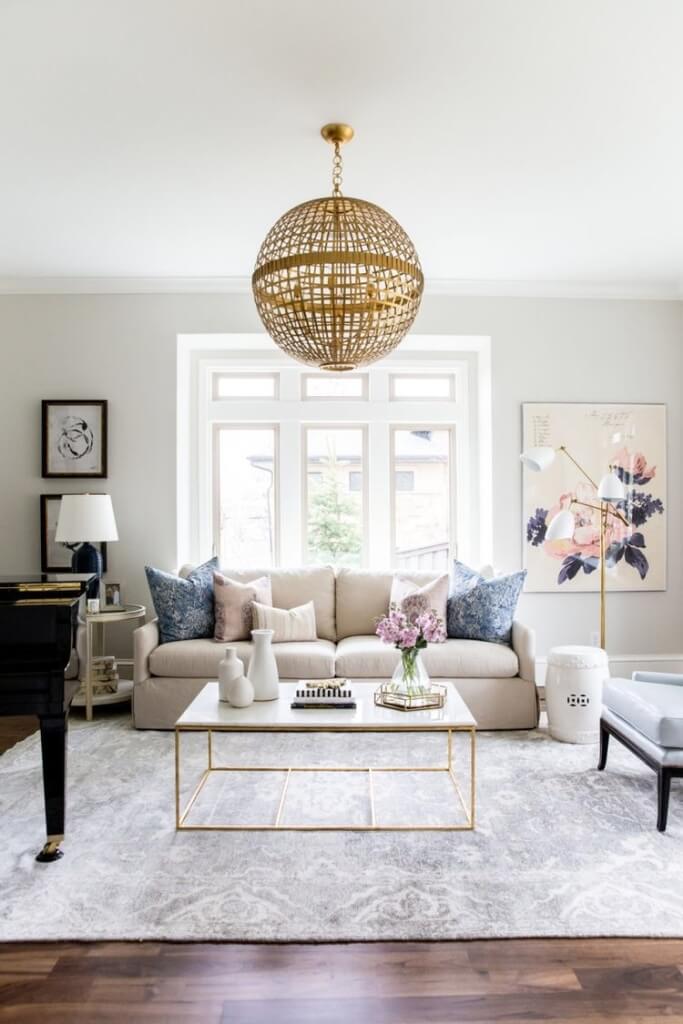
Foothill Drive Project Formal Living Room By Studio Mcgee
When it is dark outside or too warm in the room to benefit from natural light, strategically placed lamps will make it easier to chat, read and watch TV. If you already have attractive floor lamps to sit next to your chairs and sofas, make sure there is a coffee table nearby to hold magazines, drinks and snacks. End tables should be supplemented with a table lamp. While they vary in size, make sure they do not consume the entire space. If you are planning to place a ceiling light or chandelier in your living room, make sure you put a large piece of furniture under it. Sectional sofas and sofas are fantastic partners.
{6} Add a nice rug

How to choose the right mat Apartment Therapy
One area rug is an important tool for bringing the whole room together. Choose one in a color and fabric that matches the other furniture, as well as your decor and artwork. Place it in the center of the primary seating arrangement. Make sure it extends beyond the sofa or chairs to give an anchored feel to the place. These fabrics are not only advantageous for rooms with wood or tiles. If you have carpet in your living room, place a thicker carpet in a bolder color on top to give difference and warmth.
{7} Offer several different seating styles
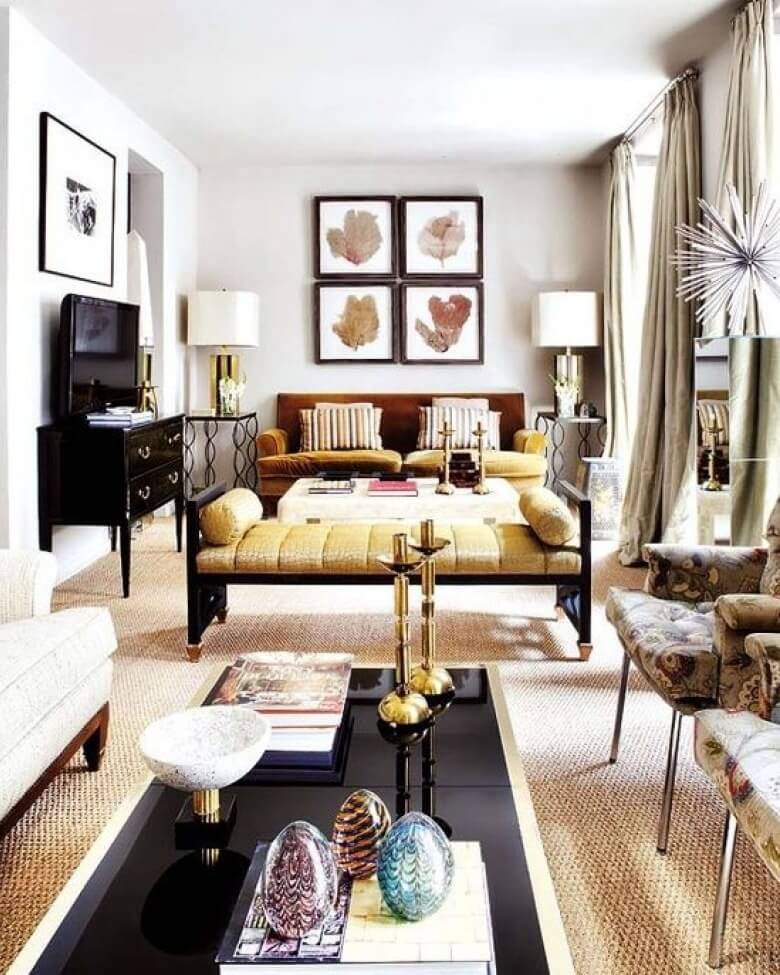
Layout for long narrow living room via Flickr
Whether your grandfather has a favorite lounger or your kids love watching movies on the couch, it's easy to notice that everyone has their own their preferences. By providing several types of options, everyone can relax, talk and nap. Larger spaces may be best suited with a cross-sectional sofa and a few sun loungers, while smaller rooms are complemented by a recliner and plush armchairs. First, think about family favorites. Then think about the types of furniture that allow guests to stay for a while during a dinner or party. If you are arranging your living room or furnishing a new home, start with some key items. You can always add chairs if the room allows.
{8} Small coffee table
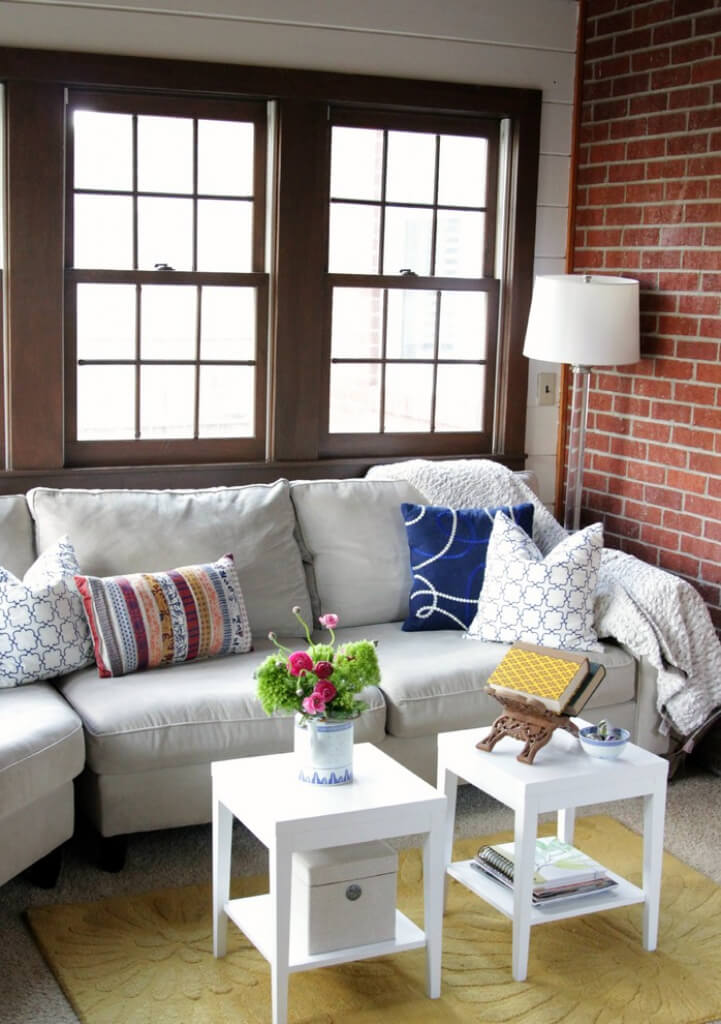
1940's Tudor Cottage via Decor Fix
When it comes to coffee tables, bigger ones are often better. But if you have a small living room, larger furniture will make it cramped and messy. Try using two small coffee tables instead of one large table to arrange your living room. They save a lot of space. They are also good for the simple flow of traffic. Plus, you can easily move them wherever you need them.
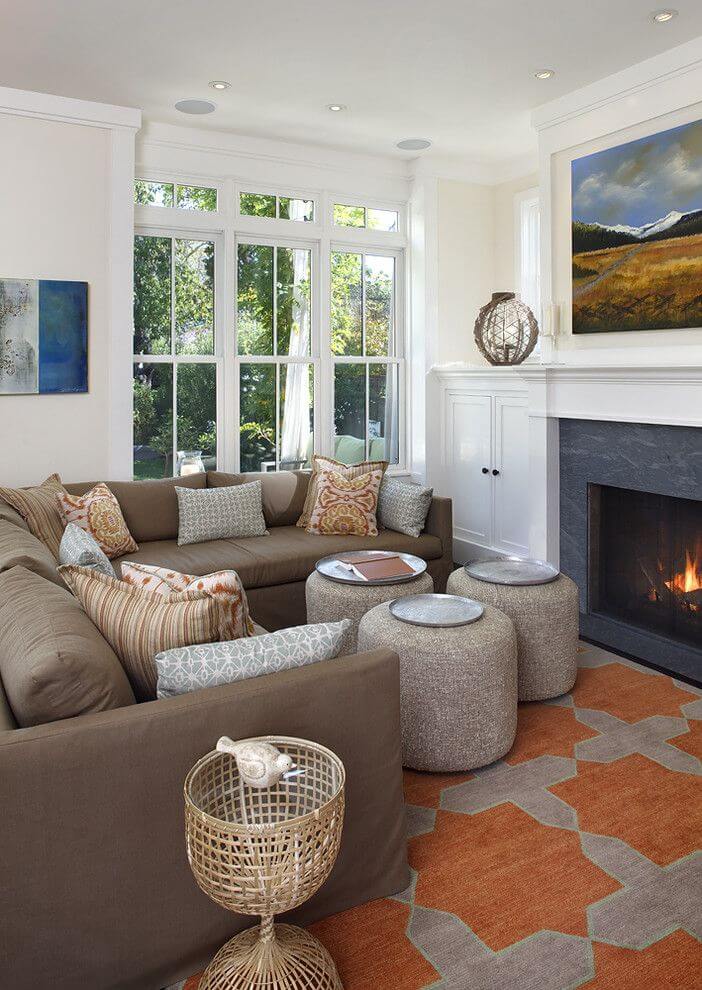
Another way to make better use of your space is to use two or more ottomans instead of a traditional coffee table. These can serve as a coffee table and also serve as extra seating when you have many guests.
{9} Hanging artwork on walls
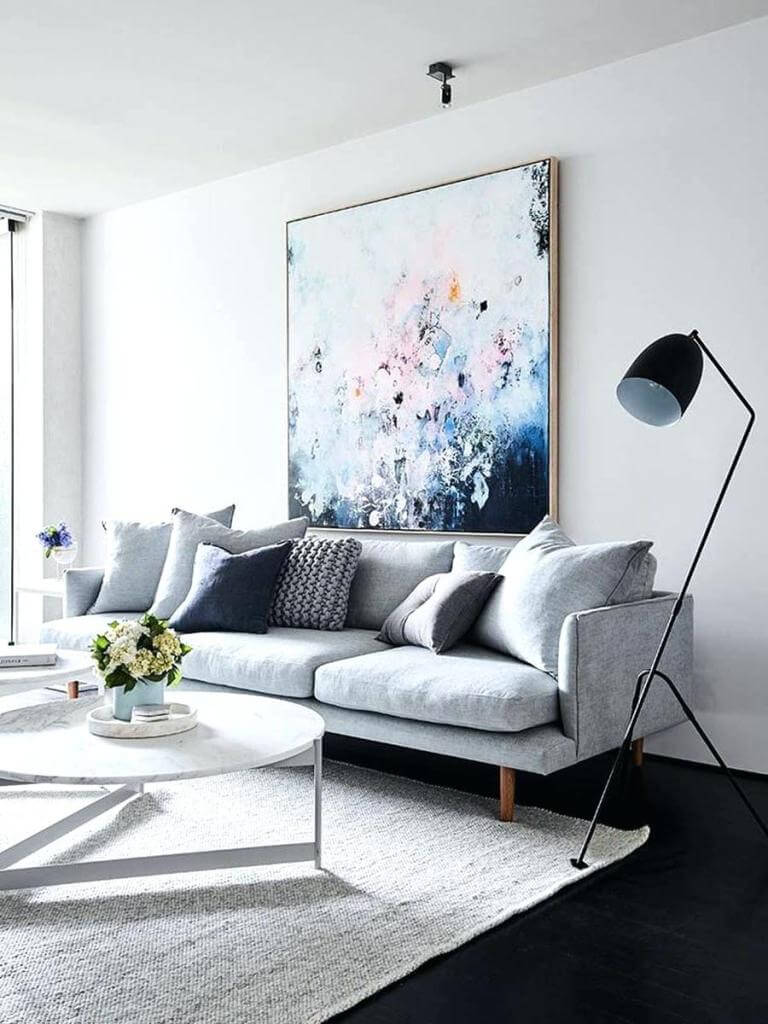
No room is really complete without a display of any kind of art in the room. But the artwork doesn't have to be cheap. You can decorate your walls for very little money by framing the children's artwork. You can also hold keys, jewelry, cutlery etc. in shadow boxes or frame pages from old books. The best place to hang artwork in the living room is above the sofa. But the artwork should be two-thirds of the width of the sofa.
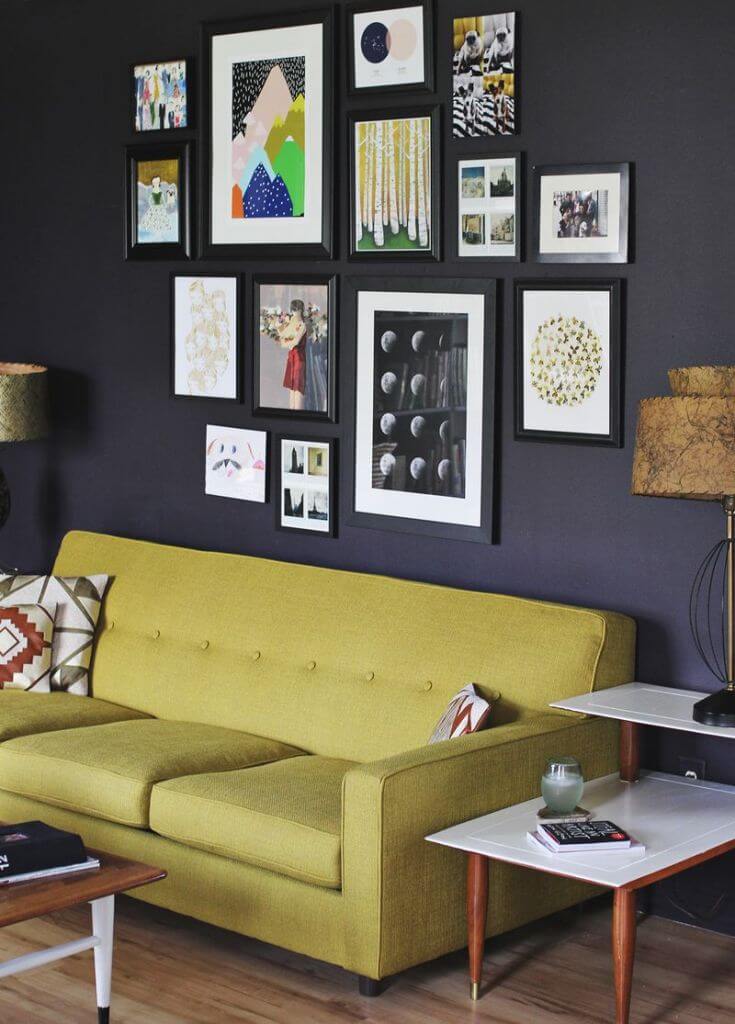
Tips for installing a gallery wall via A beautiful mess
If you have smaller pieces, use a grouping of pieces and place them strategically in proportion to the sofa. Similarly, you can also hang your artwork over a mantle or on either side of a window. If you hang your art over a mantle, make sure to hang it 4 to 6 inches above the mantle. If you have curtains on the windows, make sure you have enough space between the curtains and the walls so that the art does not look too crowded.
{10} Divide large spaces with furniture and living room / dining room / kitchen
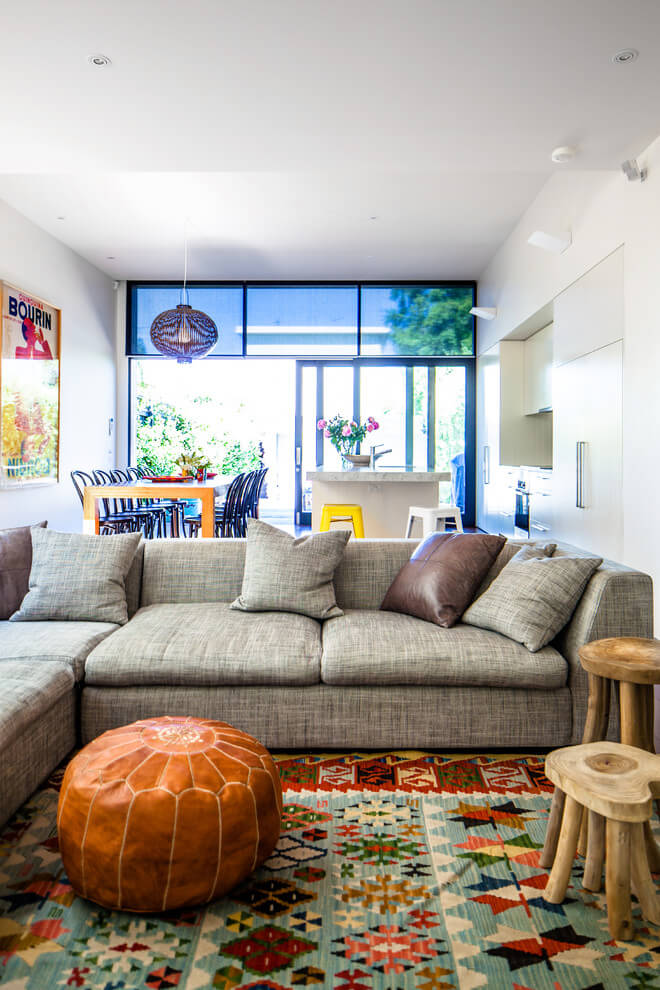
Family Home Melbourne City Ali Ross Design
If you have a large and open living / dining / kitchen area, you may want to arrange your living room in distinctive parts. An easy, yet effective way to distinguish areas in a large living room is to group furniture into separate areas. Another easy way to easily define your space is to use curtains. Other options include the use of metal dividers, bookshelves, natural and artificial screens, open shelves, sliding doors, TV towers and fireplaces. Include an extended breakfast bar or island to separate the cooking and dining areas. The most important thing to keep in mind is the easy transition from one room to another.
{11} Distance between furniture

Whether you are arranging your living room or designing your first space, it is important to arrange the furniture. It is important to allow easy movement in the room. You should also take into account the entrances to the rooms and doors. If the doors are opened, you must let them open completely. You should also think about the feeling you want in the room. If you want a cozy and intimate space, place the furniture in closer groups. But if you want an open and spacious feel, hold more space between the pieces. If your room is used as a road to another room, you should also allow for an easily navigable route from one room to another. The best thing you can do is measure your room and assess what you have before buying something new.
You can also find new solutions for your current chairs or sofas by drawing out different scenarios on a piece of paper or participating in a community furniture exchange. Remember: your living room should be fun – not necessarily perfect. The most important thing is that you enjoy spending time in your space, can move around freely and have enough freedom and solutions to happily entertain others.
